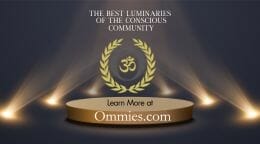What is Green?
by EcoStiletto
GREEN isn’t a label or a certification; it’s a state of mind that, to us, means a product is SUSTAINABLY produced using environmentally and socially conscious means. According to a definition by the United National General Assembly in 1987, “sustainability” means that something “meets the needs of the present, without undermining future generations to meet their needs.” But “green” can mean different things to different people:
FAIR TRADE is the sustainable business practice of manufacturing goods in economically disadvantaged areas in order to alleviate poverty, reduce inequality and provide opportunities for farmers and artisans.
CRUELTY FREE means the product was made without animal testing. VEGAN products are not animal tested and contain no animal ingredients such as honey or milk, but they aren’t organic unless they say so.
When it comes to ORGANIC and NATURAL, however, it’s all about the label, according to the U.S. Department of Agriculture: USDA 100 PERCENT ORGANIC means that every single ingredient in the product is organically grown: No pesticides, antibiotics, chemical fertilizers, bio-engineered, synthetic growth hormones or irradiated ingredients. USDA CERTIFIED ORGANIC products contain at least 95 percent organically grown ingredients.
And ECO CERT also contains at least 95 percent, as certified by an independent European agency, not the USDA.
The word ORGANIC simply means it comes from formerly living—i.e. plant or animal—material; it certainly doesn’t mean “good for you.” If you want to get technical, “organic” is defined by the Random House Dictionary as “noting or pertaining to a class of chemical compounds that formerly comprised only those existing in or derived from plants or animals, but that now includes all other compounds of carbon.” Think oil. Organic, yes. USDA certified organic, no. But we digress.
Sadly, the words ECO and NATURAL are also totally unregulated: They can mean that a product contains plant-derived ingredients and is cruelty- and preservative-free, but because they’re simply descriptive, it could also mean the manufacturer just threw it on the label to make a sale.
At EcoStiletto, we prefer organic, fairly made, animal-friendly products. If something is truly fabulous and doesn’t fit the USDA bill we might still feature it, but we won’t ever pretend it’s organic when it’s not. That’s just plain mean, and certainly not green.
Specifically, we really like things created in keeping with the “cradle to cradle” philosophy. This is the concept that when you throw something away there really is no “away.” Say, whut?
Bear with us; here’s how it works: Because the Earth is a contained system, nothing that we create can really, truly be disposed of; it just becomes waste if it can’t be reused.
“Cradle-to-cradle” challenges manufacturers to make products in a way that they can perpetually be reused or repurposed, therefore creating new “cradles” each time we find a new use.
This is an extremely poor paraphrasing of the 2002 book by William McDonough and Michael Braungart; if you really want to know what it’s all about, read Cradle to Cradle: Remaking the Way We Make Things, which you can buy used (hence, a new cradle) at Amazon.
Click HERE to Connect with your Daily Horoscope!
Of course, here at EcoStiletto, we’re style-obsessed.
OMTimes Magazine is one of the leading on-line content providers of positivity, wellness and personal empowerment. OMTimes Magazine - Co-Creating a More Conscious Reality


